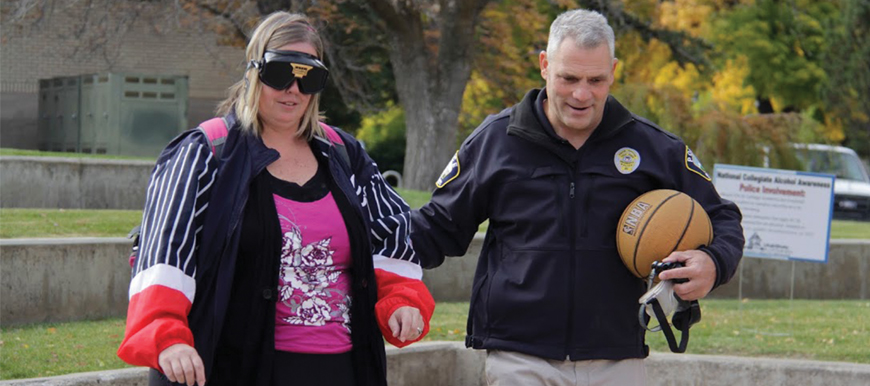Alcohol Awareness Day
Student Health Services held their Alcohol Awareness Day Thursday on the Taggart Student Center Patio to bring attention to alcohol addiction and irresponsible drinking. Tables were set up with several facts and hand outs as well as activities for those that stopped by the table.
One thousand eight hundred and twenty-five college students die from alcohol-related injuries and 599,000 are unintentionally injured while under the influence; 3,360,000 students between the ages of 18 and 24 drive under the influence of alcohol.
Several activities were available for participants, including a “brick wall” built out of paper squares for people to write on about their experience with alcohol or advice for those that drink alcohol to create a brick wall of alcohol awareness. Another activity was a beer goggle obstacle course, provided by USU Police. The beer goggles simulated the blood alcohol content of .12 to .25 percent, which is above the legal limit of .08%. One of the first volunteers was Brandy Mouritsen, a senior majoring in social work.
“It’s weird,” Mouritsen said. “I’ve never drank before so I’ve never had that sensation ever and I’ve seen people drunk before and they walk like this and I felt like I was doing that myself. I hit two cones. I thought I went way wide around them.”
Mouritsen said she did not enjoy the feeling of being intoxicated and does not want to drink.
“I’ve never had that sensation before,” she said. “After I took the goggles off I still felt wobbly.”
Travis Dunn with USU Police said there were 94 separate occasions of alcohol use on campus during the 2013-2014 school year, not including the summer. A lot of these instances involved underage drinkers. During the development of the human brain there are three “peaks” of development. These peaks happen at 2-3 years of age, 6 years of age and from 14-15 years of age. After 15 years, brain development starts to go down and the development scale levels out at about 20-21 years, which is why 21 is the legal drinking age. The consumption of alcohol during brain development causes reduced brain activity.
Joshua Tucker, a senior majoring in engineering, said he is an experienced drinker and compared the obstacle course to actually being drunk.
“It was very much a headache, that was miserable,” Tucker said. “It’s very effective at not letting your eyesight and brain be able to copy and affix your offset vision. It’s actually fairly close. I lost balance a few times.”
Chandra Marsh, a sophomore majoring in nutrition, finished the obstacle course with one statement: “Well I’m never going to get drunk.”
E-mail: kaitblue@yahoo.com
Twitter: @skittles1313

